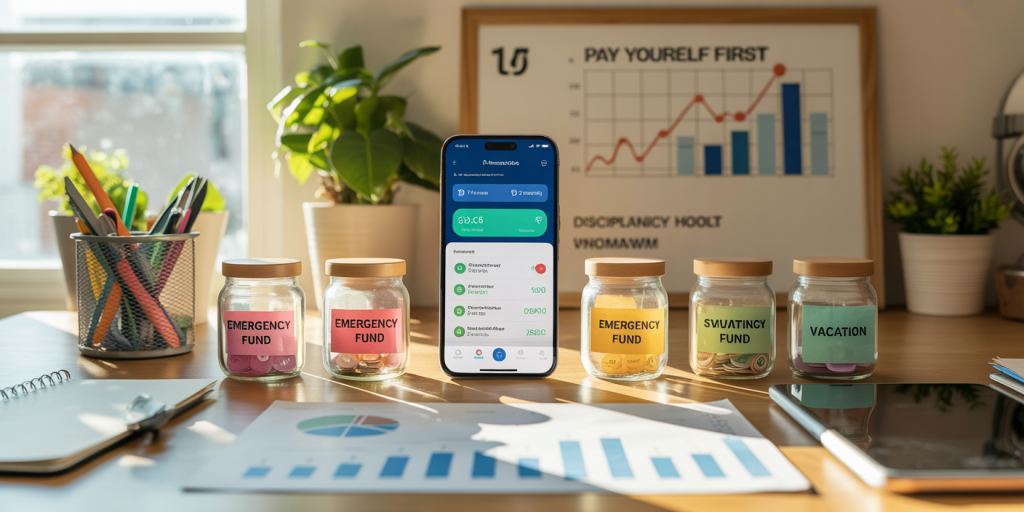As individuals progress in their careers and increase their incomes, a phenomenon known as “lifestyle creep” often begins to subtly shape their spending habits and financial decisions. Lifestyle creep, sometimes called lifestyle inflation, refers to the gradual increase in one’s spending as income rises. This incremental shift in living standards may seem harmless or even beneficial at first, but it can significantly hinder long-term financial goals such as saving for retirement, paying off debt, or accumulating wealth.
Understanding lifestyle creep is crucial for maintaining financial discipline in the face of growing earnings. This article delves deeply into the mechanics of lifestyle creep, its causes, real-life examples, the potential impact on personal finances, and strategies to mitigate its effect. It also provides data-backed insights to demonstrate why recognizing lifestyle creep early is essential for sustainable financial health.
Defining Lifestyle Creep and Its Origins
Lifestyle creep occurs when individuals increase their discretionary spending in tandem with their income growth. For example, a software developer who receives a significant salary increase may choose to upgrade to a luxury car or move into a more expensive apartment. Though some upgrading is reasonable, lifestyle creep turns problematic when incremental expenses outpace income increases.

This concept is rooted in human psychological behavior. According to a 2019 survey by Northwestern Mutual, 51% of Americans reported feeling pressure to maintain a certain lifestyle, which often leads to spending beyond their means. The comfort that comes with a higher paycheck can create a subconscious justification for indulging in more lavish expenses, clouding judgment about true needs versus wants.
Historically, lifestyle inflation has been amplified by societal expectations and social media influences. Platforms showcasing luxury lifestyles set aspirational benchmarks that may push individuals to ramp up spending quickly. Psychologists describe this as a “keeping up with the Joneses” effect, where peer pressure drives lifestyle expansion regardless of financial prudence.

Common Signs and Practical Examples
Recognizing lifestyle creep is not always straightforward because it usually happens gradually. Yet certain behaviors serve as telltale signs. One clear warning is an inability to save or consistently having less money despite higher income. Another indicator is a steady upgrade in non-essential purchases like clothes, dining out, electronics, or travel without proportional budgeting.
For instance, consider a mid-level marketing manager who receives an annual raise of 8%. Instead of directing any portion toward investments or emergency funds, the entire raise goes into frequent dining at upscale restaurants, renewing a gym membership, or subscribing to premium entertainment services. Over several years, the raise is effectively absorbed by lifestyle enhancements with little net improvement in financial security.
A real-life case study comes from a 2018 CNBC report featuring a nurse who doubled her salary over five years. Initially, she saved aggressively, but as her income increased, she bought a bigger house, luxury car, and went on expensive vacations. Despite the salary jump, she found herself financially strained years later because of unchecked lifestyle spending.
To clarify these spending shifts, the table below illustrates typical lifestyle creep scenarios in contrast to disciplined financial growth:
| Income Level | Lifestyle Creep Spending | Disciplined Spending | Outcome |
|---|---|---|---|
| $50,000 | $45,000 Expenses, $5,000 Saved | $40,000 Expenses, $10,000 Saved | Modest growth vs. stagnant funds |
| $70,000 | $68,000 Expenses, $2,000 Saved | $50,000 Expenses, $20,000 Saved | Savings increase vs. savings decline |
| $90,000 | $88,000 Expenses, $2,000 Saved | $55,000 Expenses, $35,000 Saved | Vulnerability vs. financial stability |
Psychological Drivers Behind Lifestyle Inflation
Lifestyle creep is not purely a financial phenomenon—it’s heavily influenced by psychological drivers. One key cognitive bias involved is hedonic adaptation. This theory posits that people quickly get used to improvements in material conditions and then seek more to regain initial happiness boosts. So, new cars, bigger homes, or luxury vacations initially bring joy, but over time these perks become baseline expectations.
Furthermore, social identity plays a crucial role in lifestyle decisions. According to sociologist Thorstein Veblen’s theory of conspicuous consumption, individuals buy expensive items to publicly display status and success. In that context, lifestyle creep can be viewed as a strategic move to signal upward mobility or social acceptance.
Financial psychologist Brad Klontz explains that a lack of financial literacy also exacerbates lifestyle inflation. Without proper planning or awareness, people tend to misinterpret income growth as entirely disposable, overlooking debt repayment or savings priorities. This disconnect can generate stress and financial insecurity despite apparent wealth gains.
The Financial Consequences of Lifestyle Creep
Unchecked lifestyle creep can have severe ramifications for long-term financial health. In the short term, increased spending might feel rewarding, but in the long run, it reduces the ability to build wealth or protect against emergencies. The U.S. Federal Reserve noted in its 2022 consumer finance report that only 47% of adults had sufficient savings to cover a $400 emergency expense, highlighting the risk of inflated living costs leaving minimal financial buffers.
For example, debt accumulation is a direct consequence. If lifestyle improvements are funded by credit rather than cash flow, individuals can trap themselves in cycles of high-interest payments. This scenario commonly happens with credit card debts or car loans initiated to support a higher standard of living.
Retirement savings are another casualty. The Society of Actuaries reports that about one-third of American workers have saved less than $25,000 for retirement, often because higher earnings got absorbed by lifestyle spending. Failure to maintain a consistent savings rate means missing out on long-term compounding benefits.
To illustrate the potential savings loss due to lifestyle creep, the chart below compares investment growth scenarios for two individuals over 25 years:
| Scenario | Initial Salary | Savings Rate | Annual Savings | Estimated Retirement Fund (after 25 years at 7% return) |
|---|---|---|---|---|
| No Lifestyle Creep | $60,000 | 20% | $12,000 | $875,000 |
| Lifestyle Creep (Savings 5%) | $60,000 | 5% | $3,000 | $219,000 |
Strategies to Combat Lifestyle Creep
Addressing lifestyle creep requires conscious behavior modification and financial planning. The first practical step is budgeting with a focus on savings, not just expenses. Using the “pay yourself first” approach—where a fixed percentage of income is automatically transferred to savings or investments before discretionary spending—helps maintain financial discipline.

Another strategy is to periodically review and adjust one’s lifestyle choices. For instance, evaluating subscription services, dining habits, or housing costs yearly can prevent incremental increases from going unnoticed. Some financial advisors recommend the “latte factor” method—identifying small everyday expenditures that add up and redirecting those funds into savings.
Incorporating financial goals also mitigates lifestyle inflation. Goal-based planning connects spending decisions with specific objectives such as buying a home, funding education, or early retirement. This alignment makes it easier to resist impulsive upgrades that erode financial progress.
Real-life application of these strategies can be seen in the story of Tim Urban, founder of Wait But Why, who shared how fixing a budget and automating savings allowed him to avoid lifestyle creep while doubling his income over several years. His disciplined approach enabled him to invest heavily and achieve financial independence earlier than anticipated.
Future Perspectives: Navigating Lifestyle Inflation in Changing Economies
As economies evolve, lifestyle creep will likely remain a prevalent challenge, especially in increasingly consumer-driven societies. Emerging technologies and digital payment platforms ease access to funds and purchases, potentially accelerating spending patterns. However, growing awareness about financial literacy and sustainable living may counterbalance this effect.
Younger generations, particularly Millennials and Gen Z, are reportedly more cautious about lifestyle inflation. A 2023 Bankrate study found that 62% of individuals under 35 actively monitor their expenses to avoid overextending themselves despite rising incomes. This shift may signal a cultural movement towards prioritizing financial security over conspicuous consumption.
Moreover, advances in personal finance technology, such as budgeting apps powered by artificial intelligence, enable real-time tracking of spending and saving. These tools can help users detect lifestyle creep early and adjust behaviors accordingly. Employers are increasingly offering financial wellness programs that emphasize avoiding lifestyle inflation as part of holistic employee benefits.
In the broader context, macroeconomic factors like inflation, housing prices, and wage stagnation will also shape how lifestyle creep manifests. For example, during periods of high inflation, even necessary expenses rise, complicating the distinction between essential spending and lifestyle inflation. Adopting flexible financial plans that adjust for such variables will be crucial.
Recognizing and managing lifestyle creep is essential for maintaining financial health and achieving long-term monetary goals. By understanding its psychological roots, staying vigilant about spending behaviors, and employing effective financial strategies, individuals can avoid the traps of lifestyle inflation. Looking ahead, a combination of improved financial literacy, technological solutions, and cultural shifts will play vital roles in helping people navigate lifestyle creep in dynamic economic landscapes.